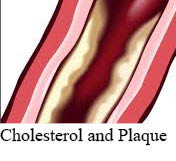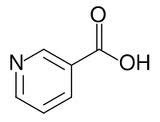Niacin and cholesterol

All of us are watching our cholesterol levels. We may eat whatever food we want, but we are cutting down on anything that has something to do with fat one way or another. But there are other factors governing the level of cholesterol in the human body that we may not know of. The liver is responsible for over 80 per cent of cholesterol circulating in our body, and the absence of fat in our diet does not necessarily mean the body does not increase production of cholesterol. With that, we need something that inhibits the unhealthy releases of cholesterol. Fortunately, that is one of the roles of the vitamin niacin in the human body.
Cholesterol as a Lipid
Lipids are indispensable participants of body processes that are ubiquitous at the cellular level. Cells cannot function without lipids in that the membranes that keep the inside of the cells from the outside are made up of lipids, cholesterol in particular.
Being the core component of the human body, cells need to effectively communicate with one another to coordinate their actions. How well they communicate is influenced by their fluidity, which depends on the levels of cholesterol present in the cell membranes. In addition, cholesterol acts as a guard that keeps in check the passage of particles in and out of the cells, keeping the harmful ones outside.
Some of the vitamins that our body needs are fat-soluble. In the intestines, cholesterol converted to bile helps in the absorption of Vitamin A, Vitamin D, Vitamin E, and Vitamin K, consequently becoming a molecular component of these vitamins in the body.
Cholesterol and Lipoproteins
It should be noted that the liver is responsible for keeping the cholesterol levels in the bloodstream constant. That is, the liver increases production of cholesterol when very little cholesterol is digested from the food that we eat, and vice versa. The liver as the major manufacturer of cholesterol distributes cholesterol to the organs and other parts of the body that need it by way of the bloodstream.
Cholesterol is carried in the blood at small concentrations. Remember that the bloodstream is water-based and cholesterol doesn’t get dissolved well in any water-based environment. Come into the picture the chemical compounds called lipoproteins, which serve as ferries for cholesterol as it travels through the bloodstream. A group of lipoproteins called LDL is the best indicator of certain cholesterol-related diseases and thus dubbed bad cholesterol.
Niacin and Bad Cholesterol

We know very well that high levels of bad cholesterol in the bloodstream lead to heart diseases. Low Density Lipoproteins or LDL, the primary transports of cholesterol in the blood, is directly involved in the accumulation of plaques in the arterial walls. An oxidation process infuses LDL into white blood cells within the walls of arteries, forming plaques that in time get thicker and thicker. Niacin has been proven to cease the development of plaques by lowering the overall levels of cholesterol and LDL in the bloodstream, effectively removing related diseases.
